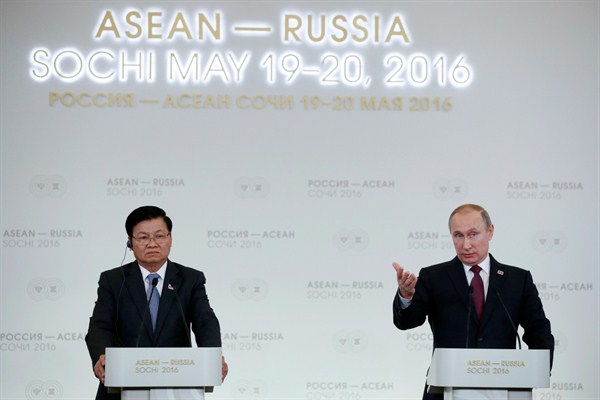The third ASEAN-Russia summit, held in the Russian city of Sochi, concluded on May 20. In a beehive of diplomatic activity, Russian President Vladimir Putin held bilateral meetings with the leader of every member-state of the Association of Southeast Asian Nations (ASEAN) over two days. The conclave has been heralded for setting in motion a roadmap to accelerate economic and security cooperation between the states of Southeast Asia and Russia—a new level of interaction that will allow Moscow to move beyond its stalled relationships with the United States and Europe to take advantage of new opportunities in Asia.
Even before Russia’s relations with the West nosedived as a result of the Ukraine crisis, Russian President Vladimir Putin had already initiated his own version of a “rebalance” toward the Asia-Pacific basin. Concerned about Russia’s overdependence on European markets and investment, the Kremlin was anxious to diversify Russia’s economic and political relations with a rising East. During Putin’s bid for a third presidential term, he stressed the importance of what he labeled “the eastern vector” for Russia’s future, and at the Asia-Pacific Economic Cooperation summit, held in Vladivostok in September 2012, he outlined his plans for increased engagement with his Asian neighbors.
Putin’s tilt toward Asia has taken on new importance, however, with the crises of the past several years: the rapid deterioration of U.S.-Russia ties, and much frostier relations with the countries of Europe, including the unraveling of Russia’s partnerships with Germany and Turkey. Russia is now looking eastward for new markets, technologies and investments to replace what has come under the ban of Western sanctions. Moreover, as Putin’s aspirations for playing a leading role in an expanded Euro-Atlantic region fade, he is seeking to hitch his dream of restoring Russia’s position in the world to the dynamism of the Asia-Pacific region.

